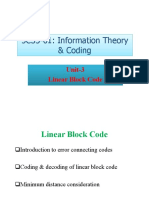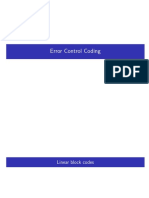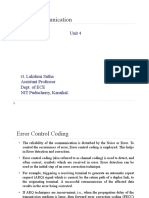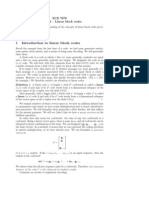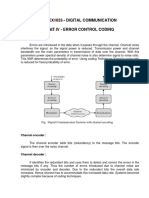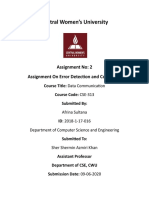0% found this document useful (0 votes)
27 views9 pagesCommunication System Assignment
The document discusses linear block codes and convolution codes for error control in communication systems. It describes how linear block codes add parity bits to message bits and how convolution codes encode data as a continuous bit stream without buffers. The document also provides an example of encoding and decoding using a Hamming code.
Uploaded by
Harshith CCopyright
© © All Rights Reserved
We take content rights seriously. If you suspect this is your content, claim it here.
Available Formats
Download as PDF, TXT or read online on Scribd
0% found this document useful (0 votes)
27 views9 pagesCommunication System Assignment
The document discusses linear block codes and convolution codes for error control in communication systems. It describes how linear block codes add parity bits to message bits and how convolution codes encode data as a continuous bit stream without buffers. The document also provides an example of encoding and decoding using a Hamming code.
Uploaded by
Harshith CCopyright
© © All Rights Reserved
We take content rights seriously. If you suspect this is your content, claim it here.
Available Formats
Download as PDF, TXT or read online on Scribd
/ 9

